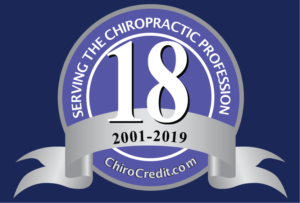 Infantile colic is one of the significant challenges of parenthood. It is one of the common reasons for pediatrician visits during the child’s first 3 months of life. Infantile colic is a prevalent and distressing condition for which there is no proven standard therapy, which motivates parents to seek alternatives. It is defined as paroxysms of crying lasting more than 3 hours a day, occurring more than 3 days in any week for 3 weeks (aka rule of 3) in a healthy baby aged 2 weeks to 4 months. Colic remains a poorly understood phenomenon affecting up to 30% of babies, with underlying organic causes of excessive crying accounting for less than 5% of cases. Laboratory tests and radiological examinations are unnecessary if the infant is gaining weight normally and has a normal physical examination.
Infantile colic is one of the significant challenges of parenthood. It is one of the common reasons for pediatrician visits during the child’s first 3 months of life. Infantile colic is a prevalent and distressing condition for which there is no proven standard therapy, which motivates parents to seek alternatives. It is defined as paroxysms of crying lasting more than 3 hours a day, occurring more than 3 days in any week for 3 weeks (aka rule of 3) in a healthy baby aged 2 weeks to 4 months. Colic remains a poorly understood phenomenon affecting up to 30% of babies, with underlying organic causes of excessive crying accounting for less than 5% of cases. Laboratory tests and radiological examinations are unnecessary if the infant is gaining weight normally and has a normal physical examination.
To date, several randomized trials examining chiropractic care for children with colic have been reported, and although these trials demonstrate some reduction in crying, weaknesses in study methodologies have limited the evidence they provide. Based on these previous studies, there is some but not definitive evidence to make a recommendation of manual therapy for the excessively crying baby.
The purpose of this study was to try to address methodological weaknesses in the scientific literature by conducting a single-blind, randomized controlled trial comparing chiropractic manual therapy with no treatment and to determine whether parents’ knowledge of treatment biases their report of change in infant crying.
Infants with unexplained persistent crying (colic) verified by a baseline crying diary of 3 days or more and presenting to the Anglo-European College of Chiropractic were included in the study. Other inclusion criteria included: patients had to be younger than 8 weeks, born at a gestational age of 37 weeks or later, and had a birth weight of 2500 grams or more and show no signs of other conditions or illness. One hundred and four infants participated.
Parents completed a questionnaire (baseline) and their child was then randomized to 1 of 3 groups. In 2 of the 3 groups, infants received treatment, and in the third, no treatment was administered. For one of the treatment groups, the parent was able to observe the treatment and knew that the infant was being treated. Parents in the other two groups were seated behind a screen and could not observe their child. Therefore, parents in these two groups were ‘blind’ as to whether their infant received treatment or not. To be clear, the 3 groups were: (i) infant treated/parent aware, (ii) infant treated/parent unaware (blinded), and (iii) infant not treated/parent unaware (blinded).
Chiropractic care was delivered by a chiropractic intern and involved low force tactile pressure to spinal joints and paraspinal muscles where dysfunction was noted on palpation. The manual therapy, estimated at 2 N of force, was given at the area of involvement without rotation of the spine. Treatment duration lasted up to 10 days, and the number of treatments during this period were influenced by examination findings and parent reports. Treatment was stopped if parents reported their infant was symptom-free. Infants in the blinded groups were placed by the parent on the examination table and then parents sat behind a screen that blinded observation. Patients in the no-treatment group were not touched by the intern and/or clinician.
Outcome measures included crying time as assessed by a 24 hour crying diary ending either 10 days after baseline or at discharge – whichever was sooner. Crying time was extracted from the diaries. A global improvement scale (GIS) was completed at either 10 days or discharge by parents and assessed their ratings of change since baseline (e.g., worse to much improvement).
Key findings of this study were:
- Compared with baseline, by day 10, there was a significant decrease in crying time -44.4%, 51.2%, and 18.6% in the treatment groups ([Blinded] and [Not Blinded]) and the no-treatment group, respectively
- In parents blinded to treatment allocation, using 2 or less hours of crying per day to determine a clinically significant improvement in crying time, the increased odds of improvement in treated infants compared with those not receiving treatment were statistically significant at day 8 (adjusted odds ratio [OR], 8.1) and at day 10 (adjusted OR, 11.8)
- There was a similar greater odds of improvement with treatment compared with no treatment using the global improvement scale
- The number needed to treat was 3 (indicating that 3 infants need to be treated to gain one additional improvement in crying time over no treatment)
In summary, this study found that excessively crying infants were at least 5 times less likely to cry if they were treated with chiropractic manual therapy than if they were not treated. Infants who were treated were equally likely to improve, whether the parents were blinded to treatment or not.
Reference: Miller JE, Newell D, Bolton JE. Efficacy of chiropractic manual therapy on infant colic: a pragmatic single-blind, randomized controlled trial. J Manipulative Physiol Ther. 2012 Oct;35(8):600-7.


